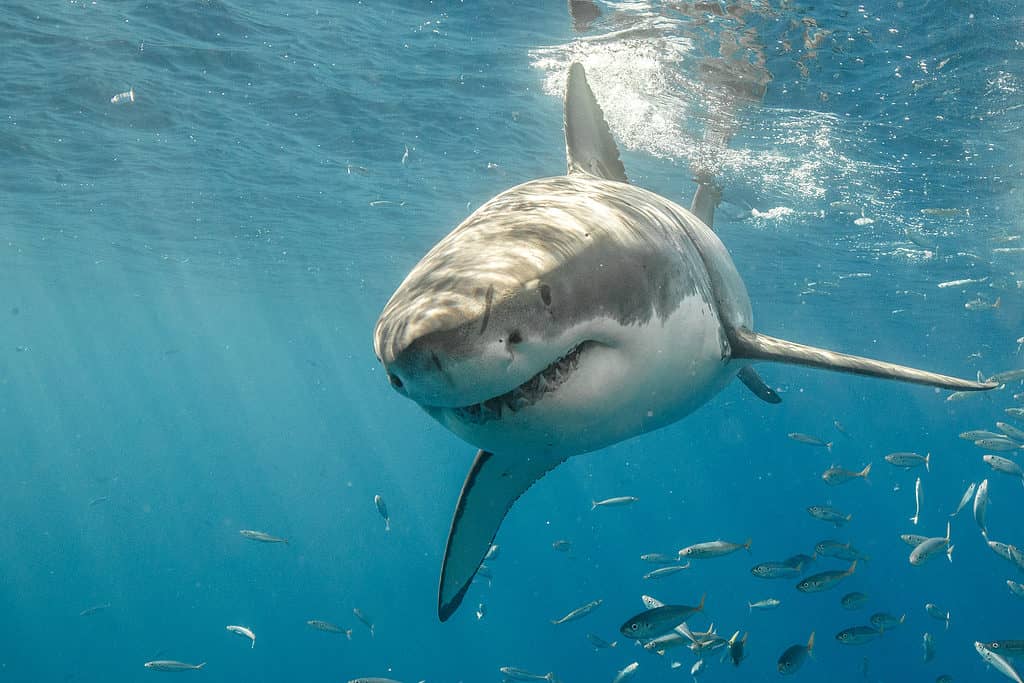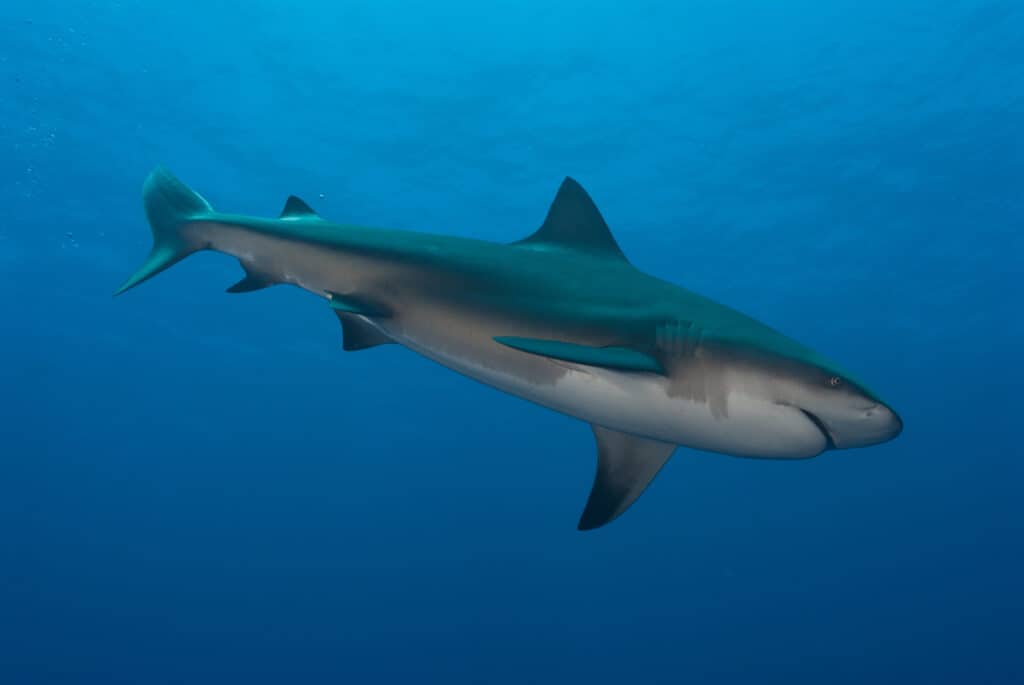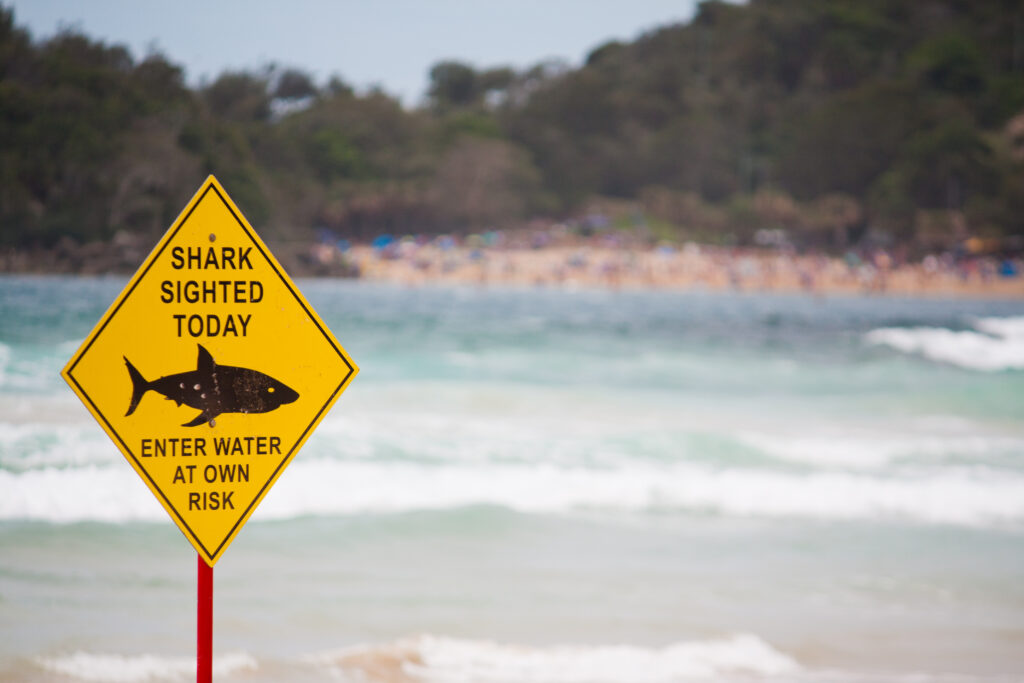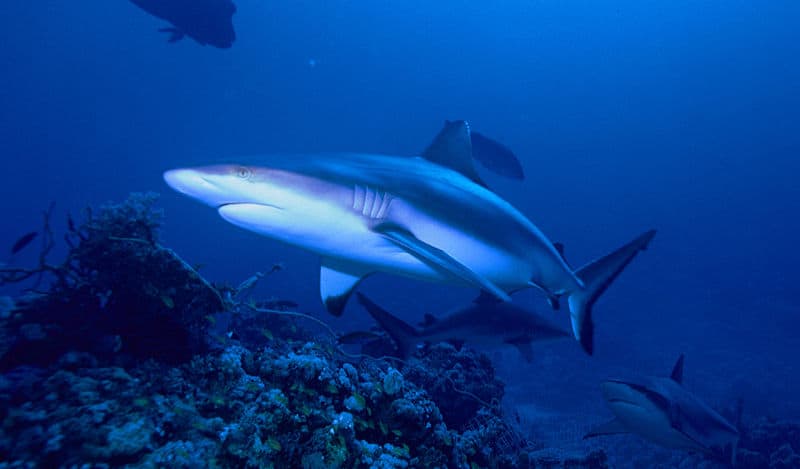Australia is a hot spot for shark diversity, with nearly 200 different species inhabiting the surrounding waters. From its coral reefs to its open waters, there is no shortage of wildlife to experience. While this article won’t discuss all of the several dozen species of sharks found in Australia, it will go over some of the most common species.
Ready to learn more? Let’s dive into the five sharks you may see in Australia, as well as Australian shark statistics.

1. Great White Shark (Carcharodon carcharias)
The great white shark has many names, including those such as the white shark, white pointer, and great white. They are a species of mackerel shark, which includes other familiar such as thresher sharks and goblin sharks. Although related to these other species of shark, the great white shark is the only surviving member of its genus, Carcharodon.
This species is best known for its position as an ocean’s apex predator, and a large one at that. Females are larger than males, with adults growing to be 11 to 16 feet long on average. However, many specimens easily exceed these averages. One of the largest individuals, a female named Deep Blue, measured around 20 feet long and weighed 4,400 pounds. It takes between 26 and 33 years before a great white shark reaches sexual maturity and is able to reproduce.
Great white sharks are found in the world’s coastal and open ocean waters, including Australia. They travel frequently, with individuals recorded around the Australian continental coast as well as nearby islands.

Great white sharks are the ocean’s apex predators.
©iStock.com/ShaneMyersPhoto
2. Tiger Shark (Galeocerdo cuvier)
The tiger shark is another massive species of shark. Individuals have been recorded to reach lengths up to 18 feet. They’re an ambush predator that excels at capturing a variety of prey, ranging from aquatic sea life to sea birds. Tiger sharks are also known to eat garbage that may wash into the ocean. This has earned them a reputation for eating almost everything. In fact, it is thought to have the most diverse diet of all other sharks.
Tiger sharks are a species of ground shark. This includes catsharks and sandbar sharks. However, not only is the tiger shark the only living member of their genus, Galeocerdo, but they are also the only living species of their family, Galeocerdonidae. Because of this, there are no close relatives of this species. They are named for the dark stripes similar to a tiger’s pattern, although this becomes less noticeable as the shark ages.
Despite having only a single natural predator (the orca), the tiger shark is a near-threatened species. This is primarily due to finning and hunting. They can be found around the entirety of Australia sans the southern shoreline. They can also be found around the surrounding islands, such as New Zealand.

Tiger
sharks are named for their stripes, which become less prominent as they mature.
©iStock.com/Divepic
3. Whale Shark (Rhincodon typus)
The whale shark is not only the largest species of all sharks but also the largest of all fish species. They grow to around 26 to 48 feet on average, but this isn’t their maximum size. Instead, the largest specimen of this supersized shark measured in at over 61 feet. That’s around the same length as a bowling lane!
Each year, between the months of March and August, you can travel to Western Australia’s Ningaloo Reef for a chance to see the whale shark. This World Heritage Site is known for being one of the best snorkeling locations in the world to see whale sharks as these gentle giants migrate.

The whale shark is the largest living fish species.
©Jan Finsterbusch/Shutterstock.com
4. Grey Reef Shark (Carcharhinus amblyrhynchos)
The grey reef shark is one of the most common sharks you might encounter in the Indo-Pacific Ocean. Most often, you will see the grey reef shark in the drop-off zones surrounding coral reefs. As a result, they are a common shark in Australia as well, although they typically only exist on the northern coast of the country.
They are the smallest shark on this list so far. Most adult grey reef sharks are around 6 feet long or less. The maximum length reported is about 8.5 feet. One of the most interesting facts about these fish is that they will eventually darken over time. This is because they live in shallow waters and are thus prone to tanning, just like humans!
5. Bull Shark (Carcharhinus leucas)
The bull shark is considered to be the most aggressive shark in Australia. It is found not only in salt water but freshwater as well, meaning you can encounter this shark in coastal waters or lakes. This is because it is able to use osmoregulation to survive in a variety of types of water. They are found in the coastal waters surrounding the eastern, western, and northern coasts of Australia.

Bull sharks can also be seen in freshwater thanks to osmoregulation.
©Fiona Ayerst/Shutterstock.com
Shark Statistics in Australia
Recently, an interactive map has emerged that details reported shark attacks, differentiating between those that are fatal and non-fatal. As it turns out, there are specific areas where shark attacks happen the most in Australia. This includes Queensland and New South Wales, which are located on the eastern coast of Australia. The majority of these are non-fatal. However, at a surface level, it appears the majority of fatal attacks occur between the Gold Coast and Tweed Heads.
However, the Gold Coast also sports a population of several hundred thousand, and it is often considered one of Australia’s tourist capitals. As a result, it is important to understand the dynamic between an increased population and increased shark spottings or attacks, as well as additional conditions. Out of 57 total unprovoked shark bites in 2022, only nine of these were located in Australia.

Australia is home to nearly 200 different species of sharks.
©iStock.com/mingis
Summary of 5 Sharks Found in Australia
Here’s a recap of five of the shark species present in Australian waters that we looked at.
| Number | Shark Species | Scientific Name |
|---|---|---|
| 1 | Great White Shark | Carcharodon carcharias |
| 2 | Tiger Shark | Galeocerdo cuvier |
| 3 | Whale Shark | Rhincodon typus |
| 4 | Grey Reef Shark | Carcharhinus amblyrhynchos |
| 5 | Bull Shark | Carcharhinus leucas |
The photo featured at the top of this post is © Wirestock Creators/Shutterstock.com
Thank you for reading! Have some feedback for us? Contact the AZ Animals editorial team.







